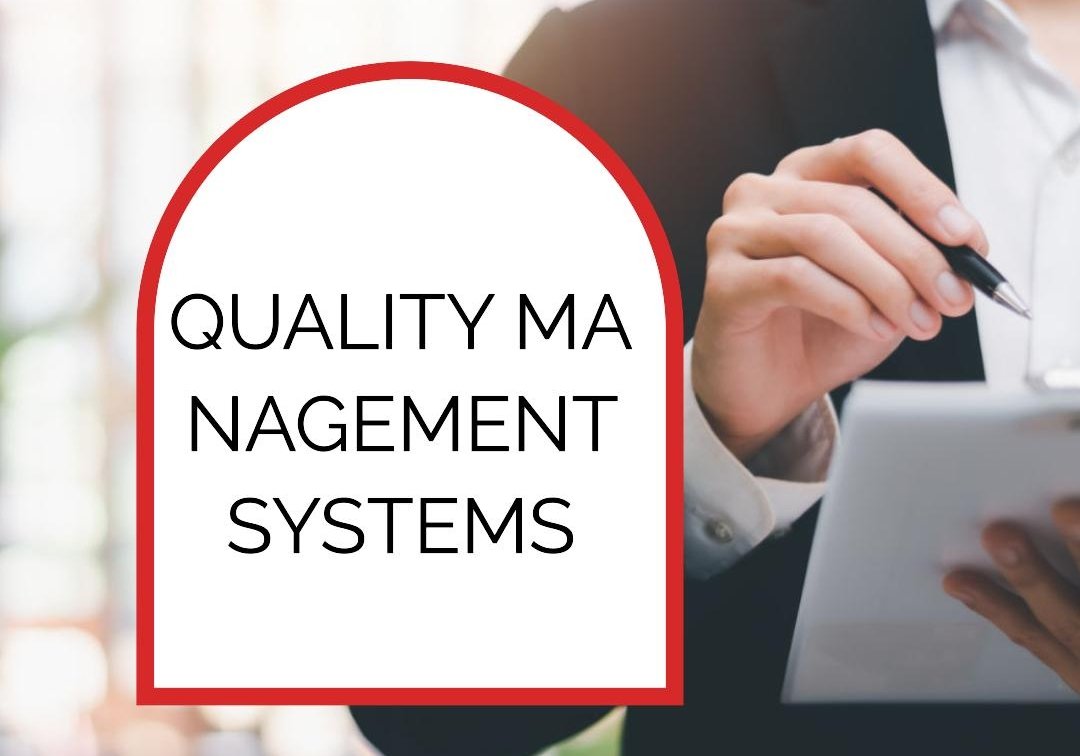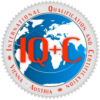ISO 9001:2015 Quality management systems
ISO 9001:2015 is an international standard that specifies requirements for a quality management system (QMS). Organizations use the standard to demonstrate their ability to consistently provide products and services that meet customer and regulatory requirements and to demonstrate continuous improvement.
Key Aspects of ISO 9001:2015
- Objective:
- To provide a framework for quality management systems that help organizations ensure they meet customer and other stakeholder needs within statutory and regulatory requirements.
- Scope:
- Applicable to any organization, regardless of its size, type, or the products and services it provides.
- Benefits:
- Improves product and service quality.
- Enhances customer satisfaction.
- Demonstrates commitment to quality.
- Facilitates continuous improvement.
- Increases efficiency and reduces waste.
Structure of ISO 9001:2015
The standard follows the high-level structure (HLS) common to other ISO management system standards, making it easier to integrate multiple management systems. The main clauses are:
- Clause 1: Scope
- Defines the scope of the standard and the intended outcomes of implementing a QMS.
- Clause 2: Normative References
- Provides references to other documents that are indispensable for the application of ISO 9001:2015.
- Clause 3: Terms and Definitions
- Defines terms used in the standard to ensure a common understanding.
- Clause 4: Context of the Organization
- Requires the organization to understand its context, including internal and external issues, interested parties, and the scope of the QMS.
- Includes requirements for determining the scope of the QMS and its processes.
- Clause 5: Leadership
- Emphasizes the role of top management in demonstrating leadership and commitment.
- Includes requirements for establishing a quality policy, defining organizational roles, responsibilities, and authorities.
- Clause 6: Planning
- Requires organizations to address risks and opportunities, set quality objectives, and plan changes to the QMS.
- Clause 7: Support
- Covers resources needed for the QMS, including human resources, infrastructure, and environment.
- Includes requirements for competence, awareness, communication, and documented information.
8. Clause 8: Operation
-
- Deals with operational planning and control, including requirements for product and service provision, design and development, control of externally provided processes, products, and services, and release of products and services.
- Addresses nonconforming outputs. 9.
9. Clause 9: Performance Evaluation
-
-
- Requires monitoring, measurement, analysis, and evaluation of the QMS.
- Includes requirements for internal audit and management review.
-
10. Clause 10: Improvement
-
- Focuses on continual improvement of the QMS.
- Includes requirements for managing nonconformities and corrective actions.
Implementation Process
- Preparation:
- Understand the requirements of ISO 9001:2015 and assess the current processes and practices of your organization.
- Gap Analysis:
- Conduct a gap analysis to identify areas that need improvement to meet the standard’s requirements.
- Implementation:
- Develop and implement procedures and practices that align with ISO 9001:2015. Ensure all staff are trained and aware of these procedures.
- Documentation:
- Create and maintain the necessary documentation, including a quality manual, procedures, work instructions, and records.
- Internal Audit:
- Conduct internal audits to verify the effectiveness of the QMS and identify areas needing improvement.
- Management Review:
- Perform regular management reviews to assess the suitability, adequacy, and effectiveness of the QMS.
- Certification Audit:
- Engage an accredited certification body to perform an external audit. The audit will be conducted in two stages:
- Stage 1: Review of documentation to ensure compliance with ISO 9001:2015.
- Stage 2: On-site audit to verify the implementation of processes and procedures.
- Engage an accredited certification body to perform an external audit. The audit will be conducted in two stages:
- Certification Decision:
- Based on the audit findings, the certification body will decide whether to grant ISO 9001:2015 certification.
- Surveillance Audits:
- Periodic surveillance audits are conducted to ensure ongoing compliance with ISO 9001:2015.
- Recertification:
- The certification is typically valid for three years, after which a recertification audit is required.
ISO 9001:2015 Quality management systems
ISO 9001:2015 is an international standard that specifies requirements for a quality management system (QMS). Organizations use the standard to demonstrate their ability to consistently provide products and services that meet customer and regulatory requirements and to demonstrate continuous improvement.
Key Aspects of ISO 9001:2015
- Objective:
- To provide a framework for quality management systems that help organizations ensure they meet customer and other stakeholder needs within statutory and regulatory requirements.
- Scope:
- Applicable to any organization, regardless of its size, type, or the products and services it provides.
- Benefits:
- Improves product and service quality.
- Enhances customer satisfaction.
- Demonstrates commitment to quality.
- Facilitates continuous improvement.
- Increases efficiency and reduces waste.
Structure of ISO 9001:2015
The standard follows the high-level structure (HLS) common to other ISO management system standards, making it easier to integrate multiple management systems. The main clauses are:
- Clause 1: Scope
- Defines the scope of the standard and the intended outcomes of implementing a QMS.
- Clause 2: Normative References
- Provides references to other documents that are indispensable for the application of ISO 9001:2015.
- Clause 3: Terms and Definitions
- Defines terms used in the standard to ensure a common understanding.
- Clause 4: Context of the Organization
- Requires the organization to understand its context, including internal and external issues, interested parties, and the scope of the QMS.
- Includes requirements for determining the scope of the QMS and its processes.
- Clause 5: Leadership
- Emphasizes the role of top management in demonstrating leadership and commitment.
- Includes requirements for establishing a quality policy, defining organizational roles, responsibilities, and authorities.
- Clause 6: Planning
- Requires organizations to address risks and opportunities, set quality objectives, and plan changes to the QMS.
- Clause 7: Support
- Covers resources needed for the QMS, including human resources, infrastructure, and environment.
- Includes requirements for competence, awareness, communication, and documented information.
8. Clause 8: Operation
-
- Deals with operational planning and control, including requirements for product and service provision, design and development, control of externally provided processes, products, and services, and release of products and services.
- Addresses nonconforming outputs. 9.
9. Clause 9: Performance Evaluation
-
-
- Requires monitoring, measurement, analysis, and evaluation of the QMS.
- Includes requirements for internal audit and management review.
-
10. Clause 10: Improvement
-
- Focuses on continual improvement of the QMS.
- Includes requirements for managing nonconformities and corrective actions.
Implementation Process
- Preparation:
- Understand the requirements of ISO 9001:2015 and assess the current processes and practices of your organization.
- Gap Analysis:
- Conduct a gap analysis to identify areas that need improvement to meet the standard’s requirements.
- Implementation:
- Develop and implement procedures and practices that align with ISO 9001:2015. Ensure all staff are trained and aware of these procedures.
- Documentation:
- Create and maintain the necessary documentation, including a quality manual, procedures, work instructions, and records.
- Internal Audit:
- Conduct internal audits to verify the effectiveness of the QMS and identify areas needing improvement.
- Management Review:
- Perform regular management reviews to assess the suitability, adequacy, and effectiveness of the QMS.
- Certification Audit:
- Engage an accredited certification body to perform an external audit. The audit will be conducted in two stages:
- Stage 1: Review of documentation to ensure compliance with ISO 9001:2015.
- Stage 2: On-site audit to verify the implementation of processes and procedures.
- Engage an accredited certification body to perform an external audit. The audit will be conducted in two stages:
- Certification Decision:
- Based on the audit findings, the certification body will decide whether to grant ISO 9001:2015 certification.
- Surveillance Audits:
- Periodic surveillance audits are conducted to ensure ongoing compliance with ISO 9001:2015.
- Recertification:
- The certification is typically valid for three years, after which a recertification audit is required.

Conclusion
ISO 9001:2015 provides a robust framework for establishing, implementing, maintaining, and continually improving a quality management system. By adhering to this standard, organizations can enhance their operational efficiency, improve customer satisfaction, and demonstrate a commitment to quality. This standard is applicable to any organization, regardless of size or industry, aiming to improve its processes and meet customer and regulatory requirements consistently.

Conclusion
ISO 9001:2015 provides a robust framework for establishing, implementing, maintaining, and continually improving a quality management system. By adhering to this standard, organizations can enhance their operational efficiency, improve customer satisfaction, and demonstrate a commitment to quality. This standard is applicable to any organization, regardless of size or industry, aiming to improve its processes and meet customer and regulatory requirements consistently.
Need help? Book a meeting at a time to suit your schedule
If you need assistance, we're here to help! You can book a call with us at a time that suits your schedule. Simply let us know your availability. Whether you have questions, need guidance, or require assistance with our services, we're committed to ensuring you receive the help you need. Contact us today to schedule your call!
Certification Milestones
-
Free strategic meeting
-
Your tailored proposal
-
Confirmation
-
Stage 1 Audit date
-
Stage 2 Audit date (Certification)
-
Obtain your Certificate
Need help? Book a meeting at a time to suit your schedule
If you need assistance, we're here to help! You can book a call with us at a time that suits your schedule. Simply let us know your availability. Whether you have questions, need guidance, or require assistance with our services, we're committed to ensuring you receive the help you need. Contact us today to schedule your call!
Certification Milestones
-
Free strategic meeting
-
Your tailored proposal
-
Confirmation
-
Stage 1 Audit date
-
Stage 2 Audit date (Certification)
-
Obtain your Certificate


